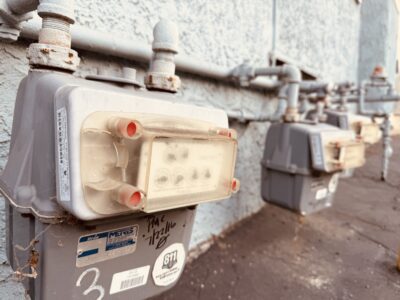Renewable Energy in the Southwest
Despite Trump, the needle has kept moving in the right direction.
The sun is intense in the desert Southwest. During the Trump years, the federal government has hard worked to promote fossil fuels. Trump also has been no friend of renewable energy. This has not stopped progress toward a cleaner energy mix in Arizona, Nevada, New Mexico, and Utah.
Arizona
Arizona’s current power mix is about a third nuclear, a third coal, a quarter natural gas, and the test renewables. The state government has been in the grip of conservative Republicans for years. In a setback for renewables advocates, in 2018 the utilities succeeded in defeating an effort to dramatically raise the state’s renewable energy mandate from 15% renewables in 2025 to 50% in 2030.
Nevertheless, the state is beginning to make real progress toward decarbonizing. The Arizona Corporation Commission, which regulates utilities, has now proposed a 100% clean energy standard by 2050.
In the meantime, due to consumer pressure, the state’s power companies are moving to reduce their carbon emissions. Tucson Electric Power has proposed a plan to move to using 70% solar, wind, and energy storage by 2035. Under the plan, the company would reduce carbon emissions to 80% below 2005 levels by 2005, and reduce water usage by 70%. The plan calls for 2.4 GW of new wind and solar power systems, including 457 MW that will be coming online over the next year. It also calls for 1.4 GW of new energy storage and for closing down two coal-fired units by 2032. Arizona Public Service aims for 45% renewables by 2030, ending use of coal by 2031, and providing 100% carbon free electricity by 2050.
Nevada
Nevada has been trending Blue but remains politically contested. According to the Energy Information Agency (IEA), Nevada gets about two-thirds of its power from natural gas and most of the rest from renewables. Coal accounts for only 8.5%. Natural gas. In 2019, the state legislature unanimously passed a law that commits the state to generate 100% carbon free by 2050, and to use 50% renewables by 2030. A year earlier, it passed a Reneweable Energy Bill of Rights, which guarantees the right self-generate and store electricity. The current renewable portfolio standard include at 50% renewable mandate by 2030, with a 22% mandate this year. In fact, the state has reached almost 28% renewables, well beyond the target.
New Mexico
According to the IEA, the state’s power is 44% coal, 33% gas, and 23% renewables. The state has plans to decarbonize rapidly.
In 2019, New Mexico passed the Energy Transition Act. The Act sets aggressive goals for carbon-free energy: 50% by 2030, 80% by 2040, and 100% by 245. It emphasizes the need to shut down coal plans and support communities affected by the loss of these jobs. The Governor called it “landmark legislation that sets bold statewide renewable energy standards and establishes a pathway for a low-carbon energy transition away from coal while providing workforce training and transition assistance to affected communities.” She also signed an executive order committing the state to the Paris Agreement. The state’s largest utility plans to phase out coal by 2031 and be almost 70% emissions free that year.
Utah
Of the states in the region, Utah has the dirtiest power mix. It gets two-thirds of its electricity from coal and 16% from natural gas. Renewables are only 11%. Even so, that’s an improvement since 2016, when the power supply was 96% fossil fuels. Utah has goal of 20% renewables by 2025.
There have been some other positive changes in the last five years. The Community Renewable Energy Act provides a route for some Utah cities to achieve a net-zero energy portfolio by 2030. About a third of the state’s population is covered. Salt Lake city has its own plan to achieve 100% net-zero energy by 2030 and seeks an 80% decrease in greenhouse gas emissions (including industry and cars) by 2040.
* * *
Coal remains a major source of power in the Southwest, but even under Trump the amount has fallen substantially. The two states under Republican control have made progress, though less than the two Democratic-leaning states. Shifts in politics in Arizona bring the prospect of more rapid change. Utah, the most robustly Republican case, has made the least progress. Overall, however, the trend lines seem clear. This is an area rich in solar potential, so the economic incentives for a cleaner power supply are strong.







Reader Comments